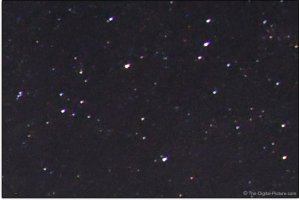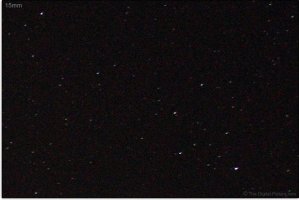A stretched star is a bad look even in the corners.
I get it...you've decided you don't like algorithmic correction of barrel distortion. It's becoming clear that you've made this decision without any evidence including that already shown, and without even bothering to apply logic to the situation. It's a common occurrence these days for certain people to ignore facts and reality and just stick with their own misguided opinion, but commonness doesn't make it less sad. So I'll try one more time.
Perhaps the problem is you are just interpreting the word 'stretched' literally. This is where logic can help. Yes, there is 'stretching' going on...but before the stretching, there is a 'squishing'. The aberration being corrected with the stretching is barrel
distortion. The purpose of the stretch is to algorithmically correct the squish. If the idea of stretching bothers you, think of it as it really is...unsquishing.
Here's a diagrammatic example of what's happening in the corner of an image from such a lens:

Barrel distortion makes straight lines into curves and circles into ovals, and correction restores them to straight lines and circles. In a lens that's optically well-corrected, lens elements do that job.
Here's a real example:

The top panel shows heavy barrel distortion, the middle panel is that image with digital correction of the distortion. The bottom panel is a different lens with essentially no distortion. Are the optically-corrected lines straighter than the digitally-corrected ones? Is sharpness/detail meaningfully affected (as asked previously, with examples)?
Since you are hung up on stars, I will borrow from Bryan's (TDP) reviews. Here's the RF 14-35 at 14mm, corner with distortion corrected:

Before you cry, "Vindication! Look at that stretching!," be aware that you're seeing coma. The shapes of the stars are actually pretty good. For comparison, here's the EF 11-24 at 15mm, where there is essentially no geometric distortion to be corrected:

As with my building examples, I don't see any meaningful difference between the two as far as distortion goes, though both have a fair bit of coma (as do most Canon lenses).
So, I'll ask again...can you show us an example of this 'stretched star bad look' from the geometric corrections? Or are your objections just due to an opinion unsupported with actual evidence?





